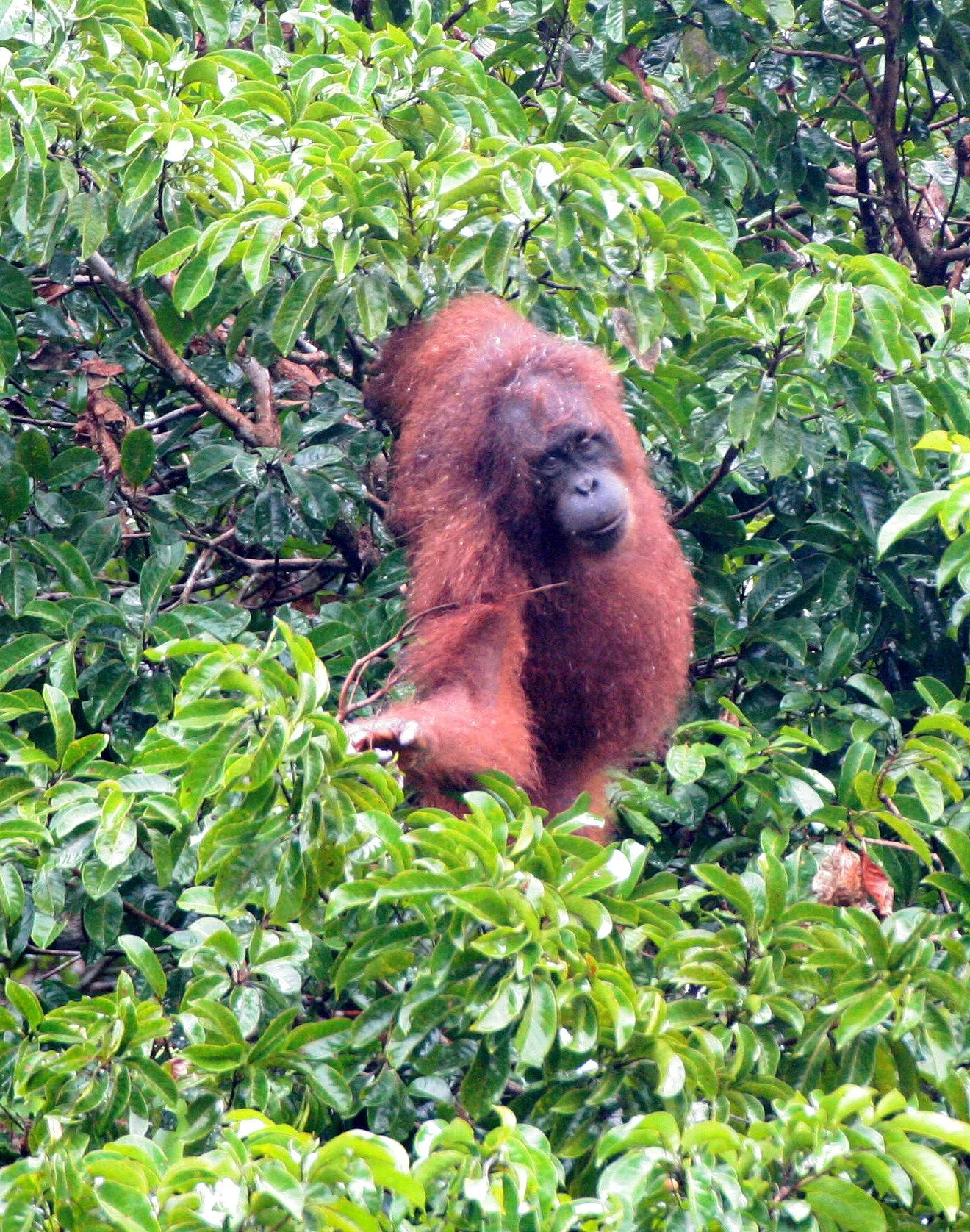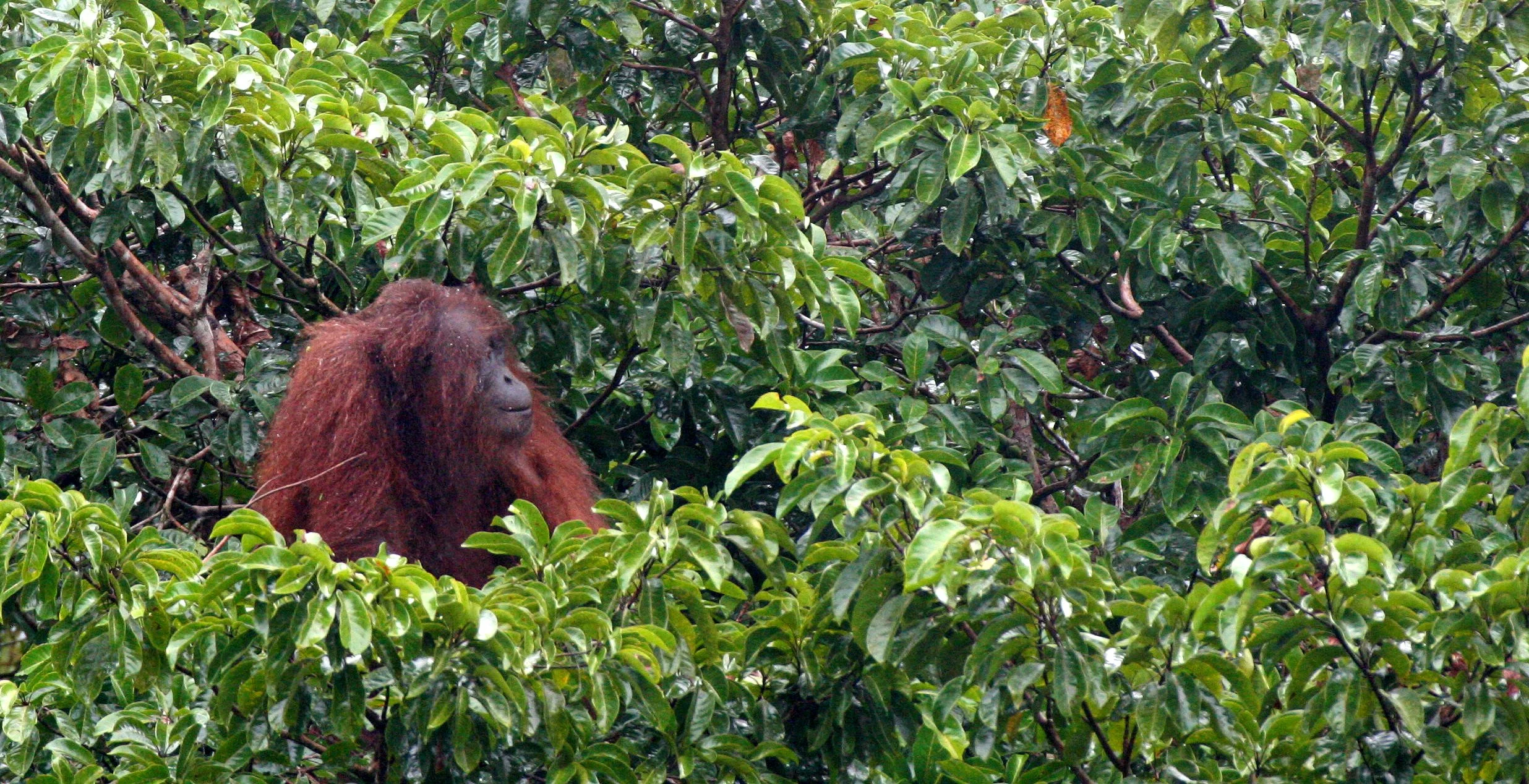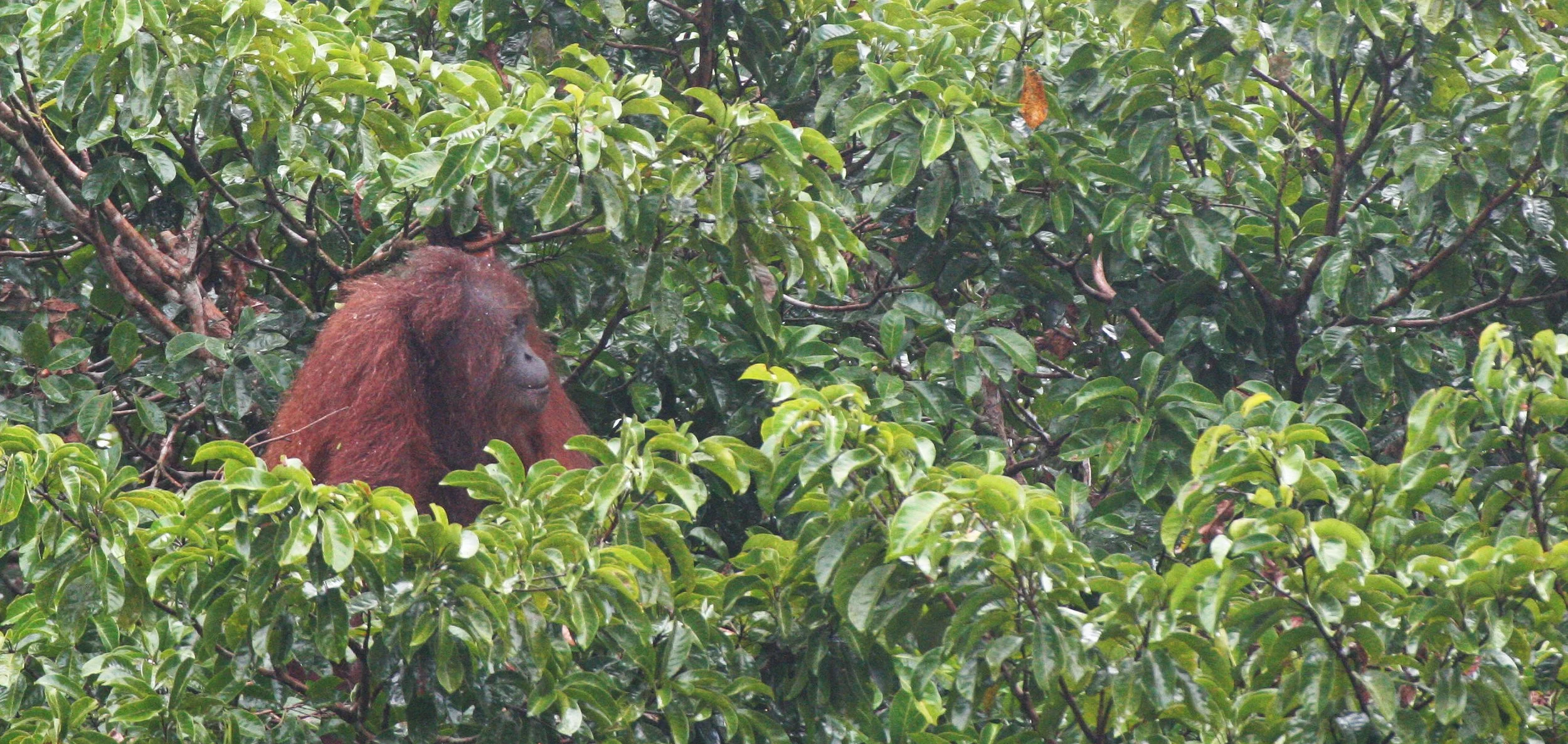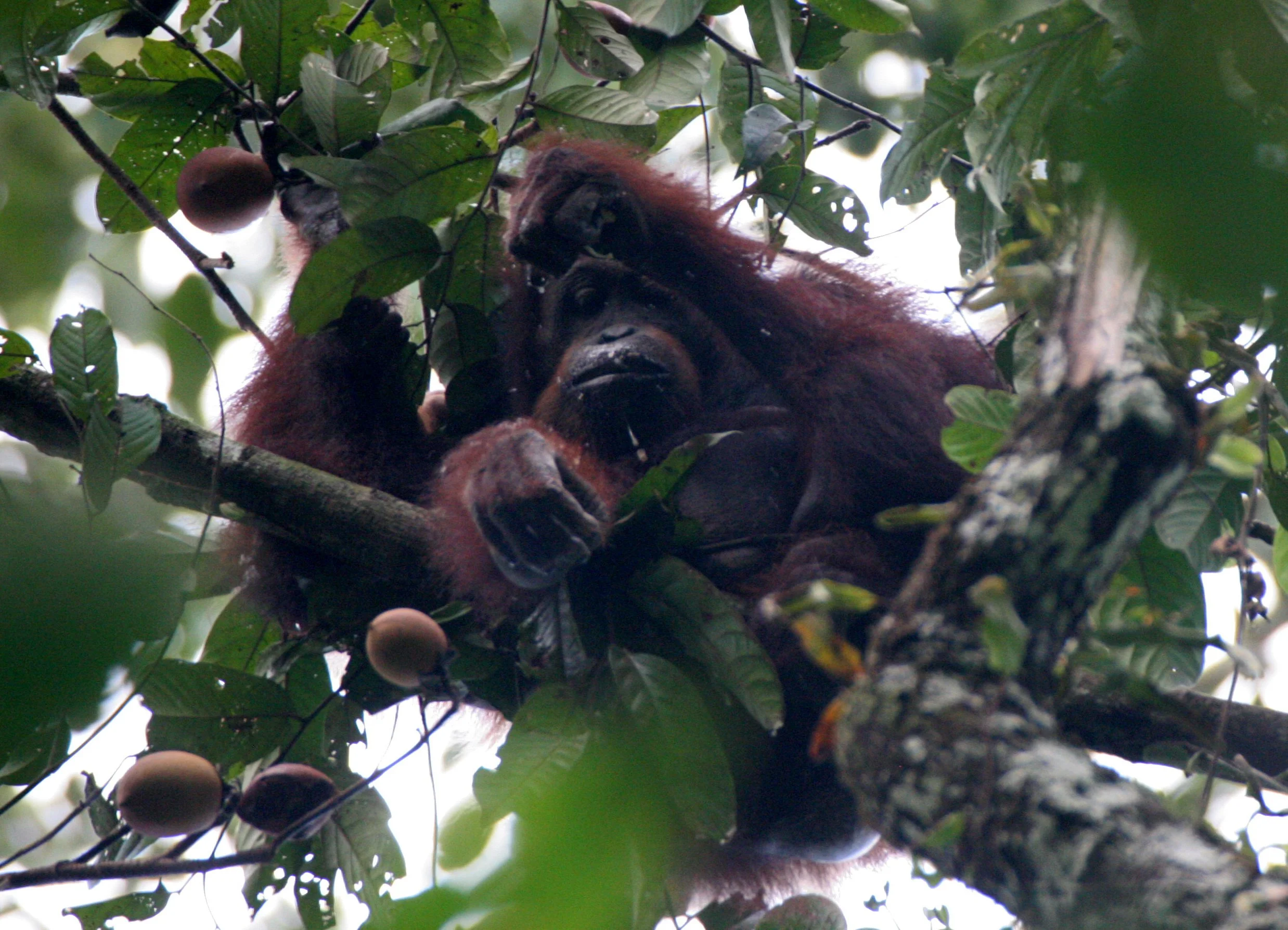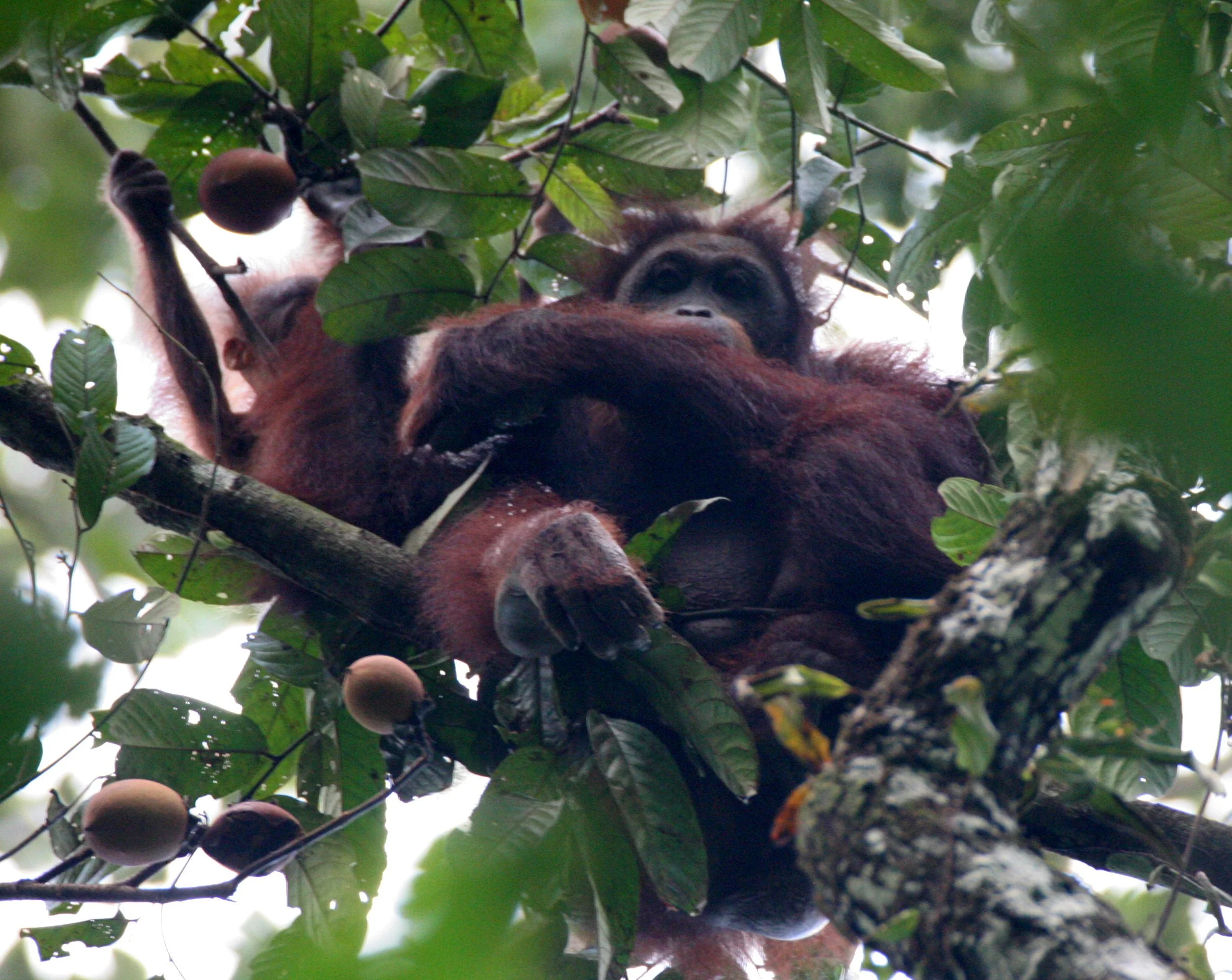The first complete orangutan skeleton that was discovered was in the Hoa Binh province in Vietnam and thought to be from the late Pleistocene epoch. It differed from modern orangutans only in that its body was proportionately smaller compared to its head. This fossil and others confirm that orangutans once inhabited continental Southeast Asia even though currently, Bornean orangutans are only found in Malaysia and Indonesia.
The Bornean orangutan is more common than the Sumatran, with about 104,700 individuals in the wild, whereas just under 14,000 Sumatran orangutans are left in the wild. Orangutans are becoming increasingly endangered due to habitat destruction and the bushmeat trade, and young orangutans are captured to be sold as pets, usually entailing the killing of their mothers.
The Bornean orangutan is critically endangered according to the IUCN Red List of mammals, and is listed on Appendix I of CITES. The total number of Bornean orangutans is estimated to be less than 14% of what it was in the recent past (from around 10,000 years ago until the middle of the 20th century), and this sharp decline has occurred mostly over the past few decades due to human activities and development. Species distribution is now highly patchy throughout Borneo; it is apparently absent or uncommon in the southeast of the island, as well as in the forest between the Rajang River in central Sarawak and the Padas River in western Sabah (including the Sultanate of Brunei). A population of around 6,900 is found in Sabangau National Park, but this environment is at risk.
This view is also supported by the United Nations Environment Programme, which stated in its 2007 report that, due to illegal logging, fire and the extensive development of palm oil plantations, orangutans are critically endangered, and if the current trend continues, they will become extinct. When forest is burned down to clear room for palm oil plantations, not only does the Bornean orangutan suffer from habitat loss, but several individuals have been burned and killed in fires. Palm oil accounts for over one tenth of Indonesia's export earnings. It is in high demand because it is used in several packaged foods, deodorants, shampoos, soaps, candies, and baked goods.
Climate change is another threat to Bornean orangutan conservation. The effects that human activity have had on Indonesian rainfall have made food less abundant and so Bornean orangutans are less likely to receive full nutrients so that they can be sufficiently healthy to breed.
A November 2011 survey, based on interviews with 6,983 respondents in 687 villages across Kalimantan in 2008 to 2009, gave estimated orangutan killing rates of between 750 and 1800 in the year leading up to April 2008. These killing rates were higher than previously thought and confirm that the continued existence of the orangutan in Kalimantan is under serious threat. The survey did not quantify the additional threat to the species due to habitat loss from deforestation and expanding palm-oil plantations. The survey found that 73% of respondents knew orangutans were protected by Indonesian law.
However, the Indonesian government rarely prosecutes or punishes perpetrators. In a rare prosecution in November 2011, two men were arrested for killing at least 20 orangutans and a number of long-nosed proboscis monkeys. They were ordered to conduct the killings by the supervisor of a palm oil plantation, to protect the crop, with a payment of $100 for a dead orangutan and $22 for a monkey.










